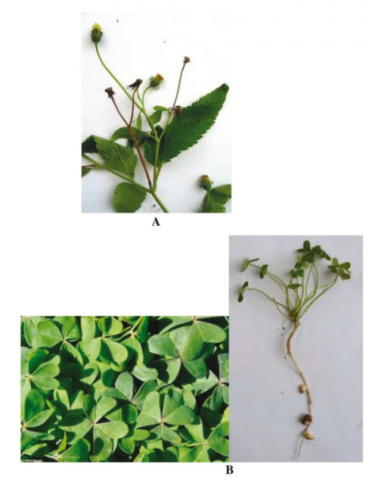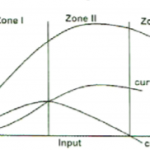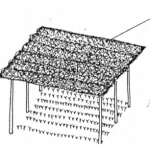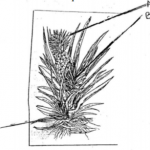KNEC KCSE Agriculture Paper 1 Question Paper / KCSE 2014
KCSE 2014
Agriculture Paper 1
SECTION A (30 Marks)
Answer all questions in this section
State four advantages of organic farming.
2 marks
Give four factors that can increase seed rates in crop production.
2 marks
State four roles of organic matter in sandy soils.
2 marks
Give four reasons for practising minimum tillage.
2 marks
What is meant by each of the following in crop production?
(a) Crop rotation; (1 mark)
(b) Mulching. (1 mark)
2 marks
Give four reasons for inverting soil slices during primary cultivation.
2 marks
State four cultural ways of controlling couch grass (Digitaria scalarum).
2 marks
(a) Name three vegetative parts that can be used to propagate pineapples. (1.5 marks)
(b) State three disadvantages of vegetatively propagating pineapples. (1.5 marks)
3 marks
Name three sources of underground water.
1.5 marks
What is meant by each of the following in agroforestry?
(a) Pollarding; (I mark)
(b) Coppicing; (I mark)
(c) Lopping. (I mark)
3 marks
State the information included in a sales receipt when a farmer is selling eggs.
1 marks
State two reasons for practising agroforestry on a (a) river-bank; (b) steep slope.
2 marks
State three disadvantages of using plastic pipes to convey water.
1.5 marks
State three causes of blossom end rot in tomatoes.
1.5 marks
What is meant by the term preference and choice as used in agricultural economics?
1 marks
SECTION B (20 Marks)
Answer all questions in this section.
Distinguish between straight and compound fertilisers.
(I mark)
(b) A farmer applied 200 kg of CAN (20%N) per hectare on his five hectares maize crop. Calculate the amount of nitrogen the farmer applied on his crop. Show your working. (4 marks)
5 marks
The diagram below illustrates a type of soil erosion.
(a) Identify the type of erosion. (1 mark)
(b) How does the type of erosion shown above occur? (2 marks)
(c) How does cover cropping help to control the type of erosion shown above? (2 marks)
5 marks
The table below shows the population and gross domestic products of countries A and B.
| COUNTRY | GROSS DOMESTIC PRODUCT
(million Ksh) |
POPULATION
(million) |
| A | 1800 | 36 |
| B | 1200 | 15 |
(a) Calculate the per capita income for each country. Show your working. (2 marks)
(b) Which of the two countries is more developed economically? (I mark)
(c) Give a reason for your answer in (b) above. ( I mark)
(d) How can agriculture increase the gross domestic product of a country? (I mark)
5 marks
The photograph below shows weeds labelled A and B.
(a) Identify the weed labelled A. (1 mark)
(b) State one mechanical control measure for the weed labelled A. (1 mark)
(c) Which category of herbicide will be most suitable to control the weeds labelled A and B? (2 mark)
(d) Give a reason for your answer on weed B above. (1 mark)
5 marks
SECTION C (40 Marks)
Answer only two questions in this section.
(a) Describe the various risks and uncertainties in crop farming. (10 marks)
(b) State the functions of Young Farmers Clubs in Kenya. (5 marks)
(c) Give the reasons for land registration in Kenya. (5 marks)
20 marks
(a) Explain five ways in which the Kenyan government can improve maize production to ensure food security in the country. (10 marks)
(b) Why is pruning done in crop production? (10 marks)
20 marks
(a) The tables below give information on the supply and demand schedules for tomatoes on a market. Table 1: Prices and quantities of tomatoes supplied.
| Tomatoes (kg) | Price per kg (Kshs.) |
| 150 | 16.00 |
| 130 | 14.20 |
| 125 | 13.80 |
| 112 | 13.00 |
| 106 | 12.70 |
| 85 | 11.80 |
| 50 | 10.60 |
| 42 | 10.40 |
| 30 | 10.20 |
| 25 | 10.10 |
Table 2: Prices and quantities of tomatoes demanded.
| Tomatoes (kg) Price per kg (Kshs.) | Price per kg (Kshs.) |
| 80 | 18.00 |
| 87 | 16.70 |
| 101 | 15.50 |
| 119 | 14.10 |
| 135 | 13.20 |
| 155 | 12.40 |
| 171 | 11.80 |
| 185 | 11.30 |
| 191 | 11.10 |
| 205 | 10.80 |
(i) Using the above data, plot supply and demand curves on the same axes. The axes have been labelled for you. (7 marks)
(ii) Determine the price at which 120 kg of tomatoes were supplied on the market. (1 mark)
(iii) How many kilograms of tomatoes were bought at a market price of Ksh. 13.00? (1 mark)
(iv) What was the equilibrium price for tomatoes on the market? (I mark)
(b) Describe the production of maize under the following sub-headings:
(i) seedbed preparation; (4 marks)
(ii) planting;(3 marks)
(iii) harvesting.(3 marks)
20 marks








